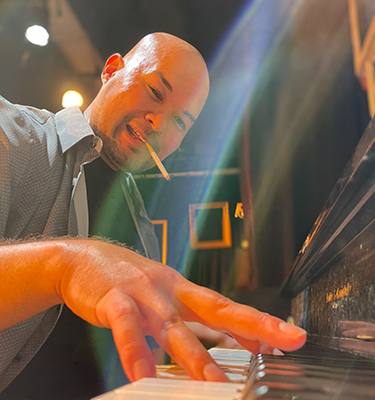Faculty Institute Awardees Drs. Chong, Halston and Mukina honored for their work
Acknowledging the tragedy that befell Maui residents and visitors alike, Chaminade President Dr. Lynn Babington asked faculty and staff to take a moment of silence to honor the victims of the worst natural disaster in U.S. history in more than a century. “Let’s keep them in our thoughts and prayers today and in the coming days,” she said, before delivering her welcoming remarks.
As the new academic year begins, Babington first looked back at the University’s many “points of pride” during the past year, including another successful Commencement at the Waikiki Shell, as well as the inaugural graduation ceremony of eight Halawa Correctional Facility inmates. It was indeed, as she said a “chicken-skin moment” for all those in attendance.

Looking ahead, Chaminade University will welcome one of its largest incoming classes of new students with a projected 1,572 undergraduate students and 642 graduate students for a total of 2,214 student enrollment. The incoming class of freshmen and transfer students amounts to 481.
“This will be one of the largest incoming classes in recent history,” Babington said. “It’s gratifying to see so many local high school graduates and others selecting Chaminade as the institute to pursue their higher education. We also have the highest graduation rate of Hawaiʻi colleges, according to the National Center for Education Statistics, and that’s something of which we’re really proud.”
During lunch at the Sullivan Family Library Lawn, Jim Heller Sutton, Assistant Provost for Faculty Development and Director, Center for Teaching & Learning, was proud to announce the three faculty winners of the Chaminade University of Honolulu (CUH) Excellence in Teaching Award, the Fr. John F. Bolin Excellence in Scholarship Award and the Dr. Joseph Allen Collegiality Award.
Education Assistant Professor, Travis Mukina, Ph.D., was honored with the CUH Excellence in Teaching Award, recognizing his approach to teaching mathematics that involves challenging and reshaping students’ pre-conceived beliefs about the subject.
“My goal is to ‘un-teach’ the negative beliefs that students hold towards math,” Mukina said. Rather than traumatize them, I want to ease their fears of numbers and calculations, guiding them to find their own solutions.”

“Clearly, Dr. Mukina is making a positive and lifelong impact on his students,” wrote Katrina Roesler in her nomination of Mukina. “And it is our great privilege to present him with this award.”
Designed to recognize a full-time faculty member for achieving excellence in scholarship, the Fr. John F. Bolin Excellence in Scholarship Award went to Dr. Abby Halston, Ed.D, NCC, LMFT. Dr. Halston’s research philosophy centers on the transformative power of scholarly inquiry and mentorship for academic and personal growth. Embracing collaboration and a student-centered approach, she fosters an environment that encourages critical thinking, ethics and creativity in research.
“She is dedicated to mentoring undergraduates, providing meaningful research experiences and empowering the next generation of scholars,” said Dr. Darren Iwamoto, who nominated Halston for the award. “The Fr. John F. Bolin Excellence in Scholarship Award recognizes a faculty member with a clear research philosophy who has advanced knowledge in their field, and it is our pleasure to recognize Dr. Halston with this award.”
Data Science Program Director and Assistant Professor, Rylan Chong, Ph.D., was honored with the Dr. Joseph Allen Collegiality Award, recognizing his extensive engagement with fellow faculty members, and his mentorship, collaboration and teamwork across a wide array of university activities, including research endeavors and curriculum development.
“His collegial work spans student programs, admissions, advising, faculty policies, career development, and community outreach, exemplifying his clear role in promoting Chaminade’s mission and values,” said Laura Tipton, a former Chaminade Data Science, Analytics, and Visualization Assistant Professor. “Dr. Chong’s wide-reaching involvement in the institution and his investment in developing relationships within the university ‘ohana has made a significant impact at Chaminade. I can think of no one more deserving of a collegiality award than Dr. Chong.”





























